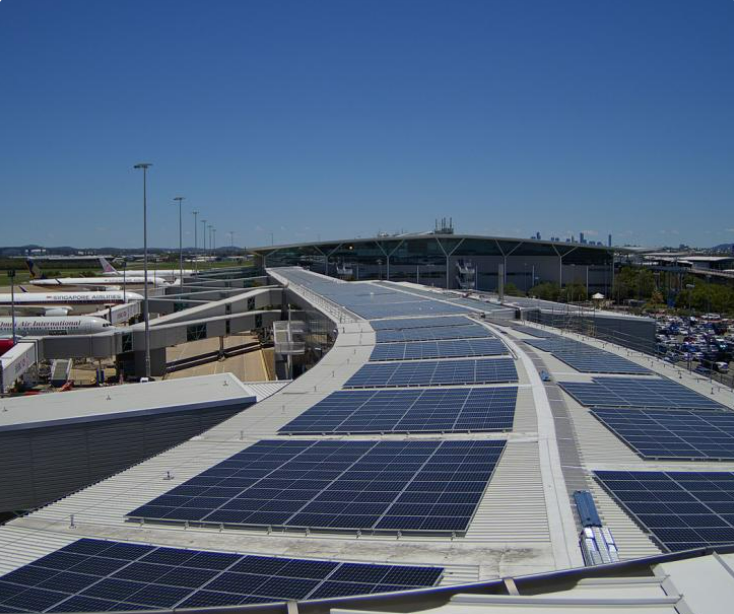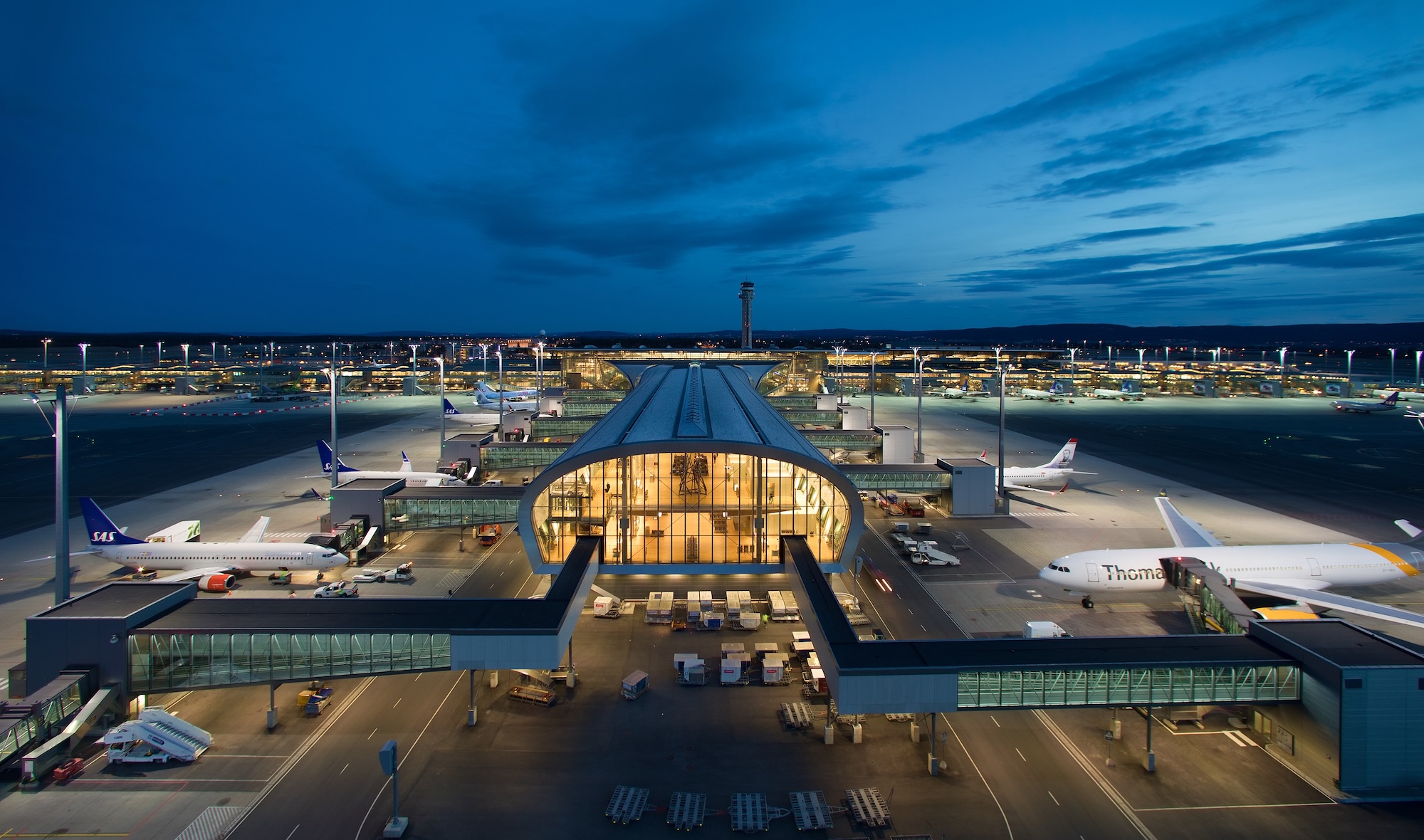DALLAS — Today, airports sit at the heart of aviation's sustainability challenge: central transport hubs that strive for carbon neutrality while maintaining the world's air connectivity.
While airports contribute only a small fraction of total aviation emissions, their role in shaping a net-zero future is increasingly strategic. Aviation is responsible for approximately 2.5 percent of the world's CO₂ emissions, so reducing the contribution from ground operations, infrastructure, and related systems is now urgent.
The path to net zero demands innovation across every level, from terminal design and renewable energy use to aircraft fueling logistics and stakeholder collaboration. Global organizations like ICAO and ACI agree on the goal of reducing carbon emissions by 2050. Airports are changing from just places for travel to systems that promote sustainability.
Understanding Airport Emissions
Emissions attributed to the airport can be divided into three scopes:
- Scope 1: direct emissions from airport-owned sources, e.g., Ground vehicles, boilers, backup generators
- Scope 2: Indirect emissions from energy consumption, e.g, Electricity, Lighting, cooling, heating
- Scope 3: Indirect emissions outside airport control, such as Aircraft movements, passenger ground transport, and tenant operations
In 2023, airports part of ACI's Carbon Accreditation emitted 6.25 million tonnes of CO₂ from sources covered under Scope 1 and 2, or about 1.7 kg per passenger. More than 90 percent of airport-related emissions fall within Scope 3; however, aircraft activity is the primary driver. Philadelphia International cited aircraft and ground access vehicles as the source of 98 percent of its 2019 footprint.
This disparity highlights the challenge: airports must decarbonize areas they directly control and support wider sector-wide changes. International and regional mandates shape the aviation industry's net-zero pathway. In 2022, ICAO committed to a 2050 net-zero goal for global aviation, which aligned with the Paris Agreement. Soon after that, both IATA and ACI World extended the pledge to airlines and airports alike.
At the regional level, the European Union has introduced its Fit for 55 package, including ReFuel EU Aviation, which targets a 2 percent SAF blend in aviation by 2025, rising to 70 percent by 2050. The carbon pricing under the EU ETS for intra-EU flights is yet another spur toward decarbonization, encouraging airports to facilitate the supply of SAF and electric ground systems.
At a national level, the UK's Jet Zero Strategy calls for all English airport operations to reach net zero by 2040, a decade ahead of the national goal. India's major hubs-which include Delhi (DEL)-are aiming for 2030, while Singapore's new Terminal 5 will be built hydrogen- and SAF-ready from the start. More than 350 airports worldwide have pledged to achieve net-zero operations by 2050, while 122 European airports have committed to reaching that goal by 2030.

Decarbonization Pathways for Airports
- Transition to Renewable Energy
Airports are on their way to 100 percent renewable energy, focusing primarily on solar, wind, and hydro to offset Scope 2 emissions. Cochin International became the world's first airport to be powered entirely by solar energy, generating more than 50 MWp of solar and 4.5 MW of hydro, which exceeds its operational demand. Until 2023, COK generated 250 million kWh of clean power, thus avoiding about 160,000 tonnes of CO₂.
So far, Denver (DEN), Johannesburg (JNB), and Amsterdam Schiphol (AMS) have built full-scale solar farms; San Francisco International (SFO) purchases 100 percent renewable energy through local utilities. And now, many hubs are installing microgrids and battery storage systems, meaning today's airports can serve as decentralized power producers, supplying both on-site and regional grids.
- The Electrification of Ground Operations
Airport authorities are replacing fossil-fuel vehicles with electric fleets and ramping up the elimination of APU use in gate parking. DEL has electrified 90% of its airside fleet and reduced annual CO₂ emissions by about 1,000 tonnes. SFO's deployment of electric gate power and pre-conditioned air enables aircraft to shut down APUs, which avoids 47,000 tonnes of emissions annually.
Of the operational vehicles at Heathrow, 17% are already zero-emission; the goal is a fully electrified fleet by 2030. Electric buses and maintenance fleets are also being deployed across Los Angeles and Hong Kong.
- Energy-Efficient Terminals and Buildings
The facility designs of modern terminals today are based on a low-energy ecosystem. For instance, Terminal 5 at Singapore Changi will utilize district cooling, daylight optimization, and automated energy management to accomplish top sustainability certifications. Denver International, along with other airports such as LHR, is retrofitting facilities with LED lighting, variable-air-volume systems, and advanced HVAC controls.
In 2015, the SFO Airfield Operations Facility became the world's first Zero-Net-Energy airport building model for sustainable design and energy self-sufficiency.
- Infrastructure and Incentives
Airports are key players in the broadening use of SAF. LHR launched the first airport program to encourage the use of SAF by giving airlines a rebate of up to 50% of the extra cost compared to regular jet fuel. In 2024, LHR committed £71 million to reach a 2.5 percent SAF blend.
San Francisco International co-founded the SAF Users Group, which aggregated airline demand, and AMS, Paris Charles de Gaulle (CDG), and Singapore Changi (SIN) have integrated SAF pipelines into hydrant systems. As such, this ensures scalable fuel distribution, which is critical to the industry's decarbonization process.
- Low-Carbon Construction & Circular Waste Management
Airport expansions now have green construction standards at their core. Portland International features mass timber roofing and low-carbon concrete to significantly reduce embodied emissions. Changi operates 350 recharge wells, recycling stormwater; Seattle-Tacoma works to achieve zero waste-to-landfill, as does SFO.
Creative approaches to airport circularity at Cochin (COK) include agricultural practices such as growing crops between arrays of solar panels.
- Green Finance Initiatives
A net-zero transition deserves innovative financial solutions. In 2025, Aeroporti di Roma issued a €750 million sustainability-linked bond that ties interest rates to the achievement of specific emissions reduction targets. Similarly, LAX funded its solar expansion with a US$546 million green bond, and London Heathrow (LHR) and Gatwick (LGW) have developed green financing frameworks linked to carbon-reduction performance metrics.

Challenges in Airport Decarbonization
- ACI Europe projects the cost of net-zero aviation at €820 billion. Financial obstacles exist for smaller airports without public-private partnerships or subsidies.
- Scope 3 Dependency More than 90% of the airport emissions arise from aircraft and tenant operations areas beyond direct control.
- Certification standards vary around the world, making the investment and implementation of hydrogen and SAF more difficult.
- Operational Constraints: Land scarcity and infrastructure limitations impede the installation of huge renewable systems.
- The post-pandemic recovery, along with inflation, keeps budgets in check, while SAF mandates increase operational costs.
Despite all these obstacles, in the words of Luis Felipe de Oliveira, Director General of ACI World: "Airports have been leaders in decarbonization. The onus is on all of us so aviation can continue serving communities worldwide."
Emerging Innovations
- Hydrogen and Electric Infrastructure
Airports in Oslo, Toulouse, and Hamburg are testing hydrogen refueling and electric aircraft charging systems. These airports are like "living labs" for new travel technologies. They help officials improve safety rules and fueling practices.
In the United States, RMI hosted workshops throughout Utah and Colorado to assess various infrastructure readiness for SAF, hydrogen, and electric aircraft. Their findings emphasized the need for pilot programs, regional collaboration, and shared master planning between airports and utilities.
- Microgrids and Resilient Power Systems
Microgrids are becoming more critical for ensuring reliable energy and redundancy. Hydrogen storage, renewable power systems, and battery backup will ensure that airports maintain 100 percent uptime. Future terminals will also include intelligent energy management to balance base and peak demand from aircraft and ground vehicles.
- Collaboration and Policy Alignment
According to experts, collaboration is the key to success. "No airport can get to net zero by itself," says Kevin Burke, CEO of ACI North America. "Governments, airlines, and airports have to all collaborate to fund the necessary infrastructure."
Airports like AMS and Changi Singapore are leading multi-stakeholder coalitions that align fuel producers, airlines, and local governments under unified sustainability roadmaps.
- Transparency and Accountability
Now more than 550 airports are involved in ACI's Airport Carbon Accreditation program, which independently verifies emission reductions. Public reporting engenders investor confidence and prevents "greenwashing." "Transparency builds credibility and maintains our license to grow," said Olivier Jankovec, Director General at ACI Europe.

Looking Ahead: Airports as Energy Hubs
In 2035, the airport will be a climate-aligned airport energy ecosystem: electric and hydrogen-powered aircraft will require new fueling logistics; on-site renewables will make airports regional energy producers; integrated electric rail and autonomous transport will create seamless low-carbon mobility corridors.
In the near term, SAF will remain the most implementable tool for decarbonization. Long-term, airports will be key enablers of both hydrogen and electric flight, driving new models of aviation sustainability.
As Heathrow's Carbon Strategy Director Matt Gorman summarized, "Sustainable Aviation Fuel is already powering flights; the challenge now is making it scalable and affordable."
The next decade will be a point of inflection. Airports that invest early in decarbonization will not only reduce emissions but also strengthen resilience, attract investment, and position themselves as global leaders for sustainable air travel.



.webp)
